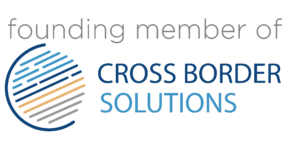Change Management Process: Definition, Models & Methods
A company needs to constantly adapt and adjust to new market conditions in order to remain successful in the long run. Otherwise, it runs the risk of missing out on important trends, technologies, and opportunities and being overtaken by competitors. However, changes can also pose a huge challenge that needs to be mastered in the day-to-day business without neglecting important operational tasks. A mature change management process provides the right models and tools for this purpose.
In this article, we will explain why a structured process in change management is so important and the benefits it can offer to your company. Experienced interim managers can also support you in the most challenging changes.
What is change management?
Change management, as defined, involves managing changes within a company. It describes an active process of planning and implementing changes while aiming to minimize negative impacts on daily operations. The scope of change can encompass virtually any area of the company – there are no inherent limitations. Often, a dedicated change manager, specialized in this field, leads the process.
Indeed, typical examples of change management include restructuring initiatives, the implementation or replacement of tools within the company’s landscape, or entering new markets. These changes can impact both individual departments and the entire organization. Change management supports the change process by providing targeted measures and methods to ensure its successful implementation.

Involving employees is important as part of the change management process
What are the benefits of change management?
Change always means a new challenge – not only for the company, but especially for the employees. Without a professional change management process, all stakeholders quickly reach their limits of endurance – the changeover becomes a test of patience.
Change processes under competent management can prevent these challenges:
- They create a positive perception for the necessity of change.
- They significantly minimize employee concerns and resistance.
- They help avoid or reduce negative impacts.
- Ultimately, these factors enhance the overall success of the change process.
Which models can be used as a guide during the change management process?
There are many different models that deal with the change management process in the company. This also shows how important the topic is in the real business world. Two of the most popular models are Wilfried Krüger’s 5-phase model and Jeff Hiatt’s ADKAR model. As well as my personal preferred approach by Kotter.
5-Phase Model by Wilfried Krüger
It is particularly popular in the German-speaking region. It builds upon previous models but offers more flexibility. One notable feature is that it allows for the possibility of revisiting previous phases of the change process if necessary.
These are the change management phases of the 5-Phase Model:
- Initialization: In the first phase, the necessary “change” is identified, and an experienced manager is appointed to drive the transformation in the organization.
- Conceptualization: During the conceptualization phase, additional project stakeholders are determined, and together with the change manager, they create the necessary action plan.
- Mobilization: Early and transparent communication is often the foundation for employees to accept and support the change. Mobilization focuses on achieving this communication and engagement.
- Implementation: The next step is the actual implementation, carried out by the change manager and potential project participants. The project stakeholders monitor the progress and make adjustments as needed.
- Stabilization: The stabilization phase involves integrating the change into the day-to-day operations of the business. It is often necessary to prepare employees for the next change during this phase.
ADKAR Model by Jeff Hiatt
Another popular model that can assist in the change management process is Jeff Hiatt’s ADKAR model. It focuses more on the employees of the organization, as they are usually the ones most affected by the change.
This model also relies on five phases in the change management process:
- Awareness: In the first phase, the focus is on the employees. It aims to create an awareness of the necessary change and clarify its impact on all those involved.
- Desire: The next step is to highlight the benefits of the change. This should not only create a high level of acceptance but even a desire for the change.
- Knowledge: Employees also need the right knowledge and training to successfully implement the change. This is precisely what the third phase, Knowledge, is about.
- Ability: Afterward, the new knowledge must be effectively implemented. New skills, as well as new processes and structures, can be helpful in this regard.
- Reinforcement: In the final phase, the initial successes of the change become visible. This should send a clear message to all participants that the transition has been successful.
8 Steps of Change Management according to John P. Kotter
The change management approach by John P. Kotter consists of eight steps aimed at facilitating successful organizational changes. Here is a summary of each step:
- Establish a sense of urgency: It is important to make the need for change clear and create awareness that the status quo is no longer sufficient. This is done through communicating data, facts, and experiences.
- Form a leadership team: A team of individuals needs to be assembled to lead the change process. This team should consist of individuals with diverse skills and competencies to successfully implement the change. ring and easily understandable to gain the support of employees.
- Develop a clear vision: A compelling vision for the future needs to be developed. This vision describes where the organization is headed and why the change is necessary. It should be inspiring and easily understandable to gain the support of employees.
- Communicate the vision: The vision must be communicated throughout the organization to inform employees and provide them with a clear understanding of the future. Communication should be regular and take place through various channels to ensure the message is understood.
- Remove obstacles: It is important to identify and address obstacles and barriers that could hinder the change. These obstacles can be structural, cultural, or personal in nature. They need to be systematically tackled and overcome to drive the change process forward.
- Achieve short-term wins: It is helpful to achieve some short-term goals early in the process to demonstrate the success of the change. These successes should be visible and motivate employees to continue participating in the change process.
- Anchor the change: The changes need to be integrated into the organization’s daily operations to ensure their sustainability. This requires embedding the new practices and behaviors into the processes, systems, and structures of the organization.
- Sustain the change: Finally, the change must be continuously monitored and adjusted. The organization should not settle for the achieved status quo but continue to adapt to new challenges and strive for continuous improvement.
By following these steps, Kotter’s change management approach aims to ensure that changes can be successfully implemented by providing a clear structure and direction for the change process.
Which methods and factors are promising for success in the change management process?
In the field of change management, there are several methods, measures, and factors that can help your company successfully implement change. First and foremost, it is incredibly important to set realistic goals and expectations from the beginning. It can be detrimental to promise too much to employees, especially when change is associated with a lot of work and stress.

Even more importantly, it is crucial to involve all affected employees from the planning stage and take their concerns seriously. This not only establishes an important foundation of trust but also significantly increases acceptance of the change. Other important and helpful methods can include team-building activities, conflict management, or leadership coaching. Ultimately, it is often inexperienced management that causes even seemingly small changes in the organization to fail.
Does a change management process also involve risks?
Every change involves risks. While a well-developed change management process can identify and mitigate many risks early on, it is typically not possible to completely eliminate them. Many companies make the mistake of not properly prioritizing implementation. Too many changes at once can significantly disrupt day-to-day operations and frustrate employees in the long run.
Similarly, many companies fail to allocate adequate resources or have the right personnel to implement the changes. It requires experienced managers who are familiar with the processes in change management and are not distracted by everyday tasks. Depending on the scale of the change and the organization, a change process can require one or more managers dedicated full-time to the task.
Conclusion: Change management requires experienced personnel
Especially in topics like digitalization and automation, it becomes evident how important it is to adapt to new market conditions. The willingness to change often determines how long a company can operate successfully before being surpassed by the competition. However, significant changes also require experienced personnel who can guide the process reliably and efficiently.
Experienced interim management can help you implement restructuring, introduce new technologies, or explore new markets. Change management is just one example among many where our professional interim managers can support you.
Contact us now – we are ready to provide comprehensive advice on the change management process in your company.





Leave a Reply
Want to join the discussion?Feel free to contribute!